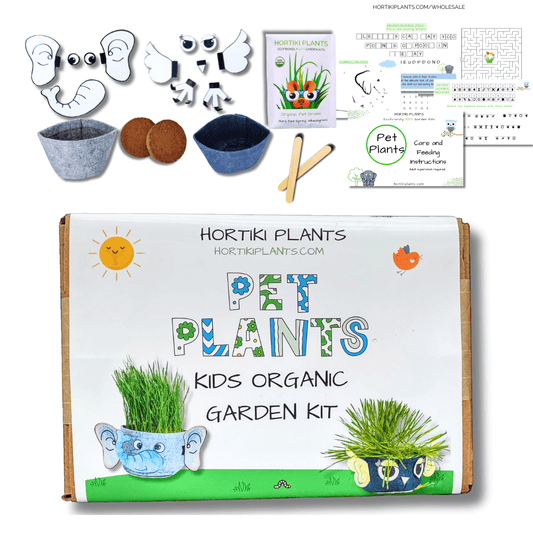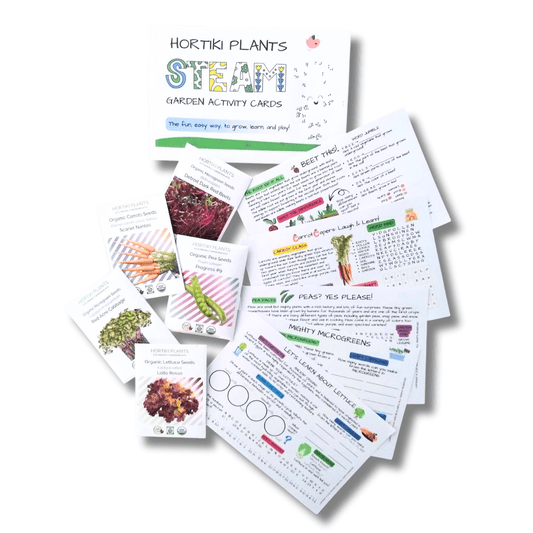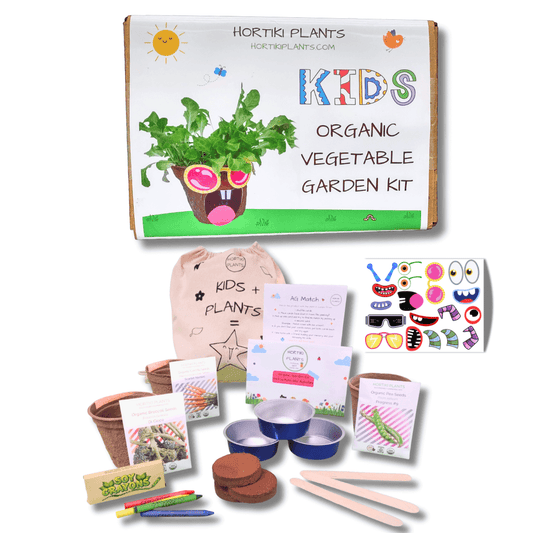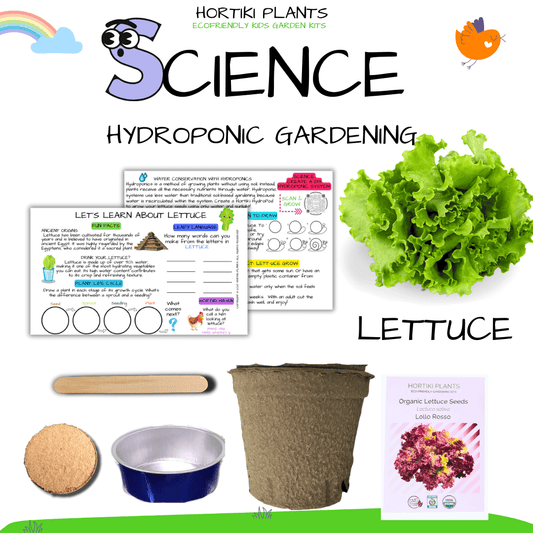From Flashlight to Framework: Unlocking STEM Standards with Microgreens! 🔦🌱

This guide will help you map the hands-on Hortiki Plants Microgreens STEAM Activity Card to a fully aligned lesson plan by connecting it to Next Generation Science Standards (NGSS) and Common Core State Standards (CCSS) in ELA and Mathematics. This updated resource includes Differentiated Instruction for Grades 1-6, Assessment Rubrics, and expanded Real-World Connections to ensure a comprehensive and engaging learning experience.
Prepare to cultivate curiosity, critical thinking, and a deeper understanding of real-world biology, engineering, and data analysis—all through a tiny container of powerful microgreens!
COMMON CORE STANDARDS ALIGNMENT
ENGLISH LANGUAGE ARTS (ELA) 📝
CCSS.ELA-LITERACY.RI.3.1 & W.3.2: Reading and Writing Informative Texts
Activity Connection: Students read about phototropism and grow lights. They write reflections in their journal on Day 1, Day 3, and Day 5, documenting their scientific process.
Educator Idea: Have students write an explanatory paragraph describing the steps and findings of the experiment, using their observations as evidence.
CCSS.ELA-LITERACY.RST.3-3: Explaining Technical Procedures
Activity Connection: Students follow and explain the sequential procedure: light on the side, light on the opposite side, light above. This directly explains the relationships between steps in a technical process.
Educator Idea: Use the "Before and After" drawings to ask students to explain *why* they moved the light and *how* the plant responded each time.
MATHEMATICS 📏
CCSS.MATH.CONTENT.3.MD.B.3: Represent and Interpret Data (Measurement)
Activity Connection: Kids use rulers to measure the plant's height on Day 3 and Day 5. This quantitative data is organized and compared to interpret the effects of different light placements.
Educator Idea: Challenge students to create a bar graph or line plot to compare plant growth measurements over the five days.
CCSS.MATH.CONTENT.3.OA.D.8: Solve Two-Step Word Problems (Data Analysis)
Activity Connection: The data collected (plant heights) can be used to formulate and solve multi-step problems about the experiment.
Educator Idea: Problem: "The plant grew 3/4 inch from Day 1 to Day 3. Then it grew 1 and 1/4 inches from Day 3 to Day 5. What was the plant's total growth during the experiment?"
NEXT GENERATION SCIENCE STANDARDS AND EXTENSIONS
LIFE SCIENCES (LS) 🌱
3-LS3-2: Traits Influenced by Environment (Phototropism)
Activity Connection: Students collect evidence (journal observations, drawings) to explain that the plant's trait (direction of growth) is determined by the environmental factor of light placement.
Educator Idea: Ask students to hypothesize what would happen if the plant were placed in a closet versus a window. Why would the trait change?
3-LS4-4: Engineering Solutions to Environmental Problems
Activity Connection: The lesson uses grow lights as a solution to environmental problems—limited space or non-ideal climate—by enabling vertical farming and year-round food access.
Educator Idea: Debate: Which is a better solution for a big city: rooftop gardens (traditional sun) or vertical farms (artificial light)? Justify your answer with evidence about land use and energy.
ENGINEERING, TECHNOLOGY, AND APPLICATIONS OF SCIENCE (ETS) 💡
3-5-ETS1-3: Plan and Carry Out Fair Tests (Controlling Variables)
Activity Connection: The entire experiment is a model of a fair test where the variable (light source location) is methodically changed, while other factors (water, temperature, soil) are kept constant.
Educator Idea: Challenge students to design an Advanced Fair Test by setting up two trays and changing only one variable (e.g., light duration, type of light bulb) to optimize growth.
ETS1.A: Defining and Delimiting Engineering Problems
Activity Connection: Students define the problem (how to make the plants grow best/straightest) and design an Engineering Upgrade (a reflective shield, a specific timer for the light) to optimize the growth system.
Educator Idea: Have students sketch and label their design for an automatic "Light Tracker" that would make the light follow the sun's path (or the plant's needs) throughout the day.
DIFFERENTIATION AND ASSESSMENT TOOLS
Differentiated Instruction (Grades 1-6)
Primary Grades (Grades 1-2) Adaptations:
- ELA/Science: Focus on drawing and labeling the setup and plant response. Use simple sentences to describe the observation ("The plant moved to the light.").
- Math: Measure height to the nearest whole inch and use simple tally marks instead of graphs for data collection.
Upper Grades (Grades 5-6) Extensions:
- Science: Research the plant hormone auxin and its role in bending. Introduce the concept of rate of growth (e.g., cm/day).
- Math: Calculate the average height of all plants in the tray on Day 5 and use decimal or fractional measurements consistently.
Assessment Tools: Differentiated Rubrics by Grade Band
To fully support the differentiated instruction, use the rubric below corresponding to the grade band to assess student performance on the experiment and journal entry.
1. Primary Grades Assessment (Grades 1–2)
| Area of Assessment | Meets Standard (3 Points) | Approaching Standard (2 Points) |
|---|---|---|
| Scientific Concept (Phototropism) | Drawing clearly shows the plant moving toward the light source and is correctly labeled. | Drawing shows the plant and light but is missing a clear directional movement. |
| Data Collection (Math) | Accurately records height to the nearest whole inch and uses tally marks to track observations. | Measurement is present but contains minor errors or is missing the tally marks. |
| Clarity & Communication (ELA) | Uses 2–3 complete, simple sentences to describe the final observation. | Uses single words or incomplete phrases that make the observation unclear. |
2. Target Grades Assessment (Grades 3–4) - (Aligned with W.3.2)
| Area of Assessment | Meets Standard (3 Points) | Approaching Standard (2 Points) |
|---|---|---|
| Scientific Concept (Phototropism) | Clearly explains that the plant bends toward the light and names the process. | States the plant bent but doesn't explain the cause (light) or name the process. |
| Use of Evidence (ELA) | Includes specific Day 1, Day 3, and Day 5 observations/measurements as evidence. | Mentions observations but lacks specific details (days or measurements). |
| Clarity & Organization | Writing is logically sequenced (beginning, middle, end) and easy to follow. | Ideas are present but are not clearly organized or sequenced. |
3. Upper Grades Assessment (Grades 5–6)
| Area of Assessment | Meets Standard (3 Points) | Approaching Standard (2 Points) |
|---|---|---|
| Scientific Concept & Research | Successfully integrates the role of auxin (or equivalent research) in their explanation of phototropism. | Mentions the research topic (auxin) but does not clearly explain its function. |
| Data Analysis (Math/Science) | Accurately calculates the average height and daily growth rate (cm/day) using fractional/decimal data. | Calculations are attempted but contain errors in the final average or growth rate. |
| Argumentative Claim (ELA) | Makes a clear claim about the optimal conditions for growth and supports it with specific numerical data from the experiment. | Makes a general claim about optimal conditions but fails to use specific numerical data as support. |



